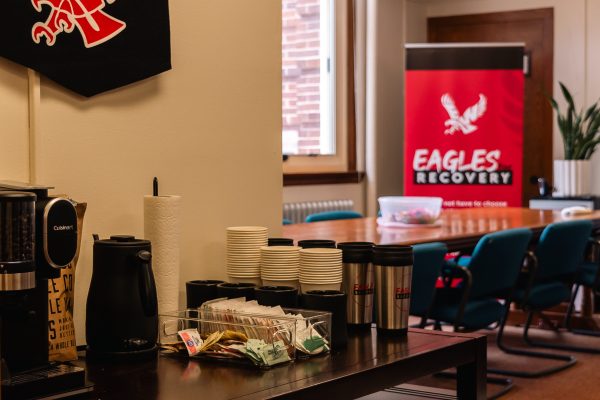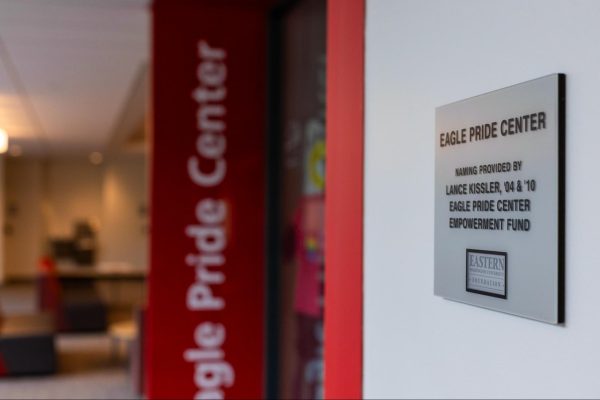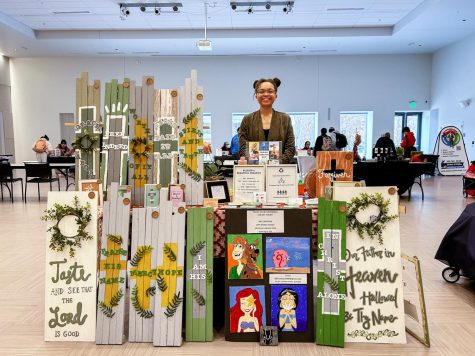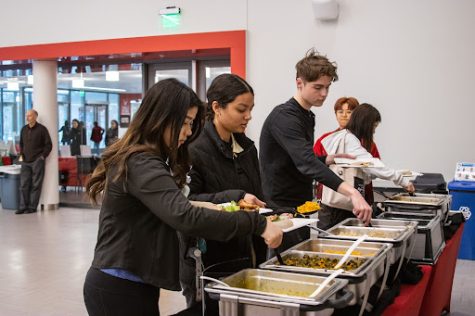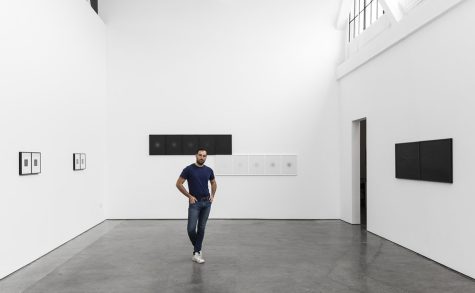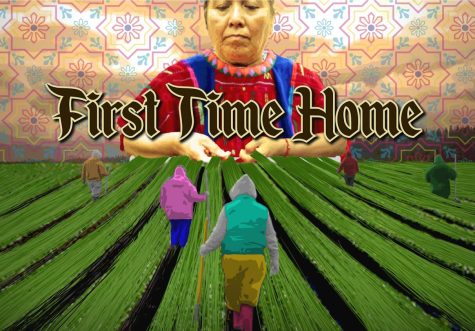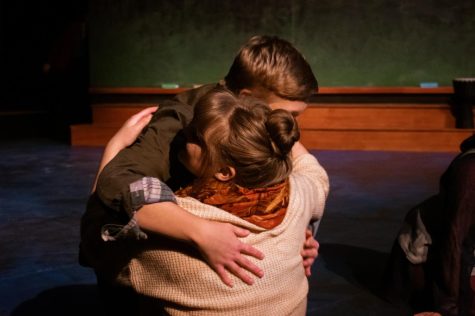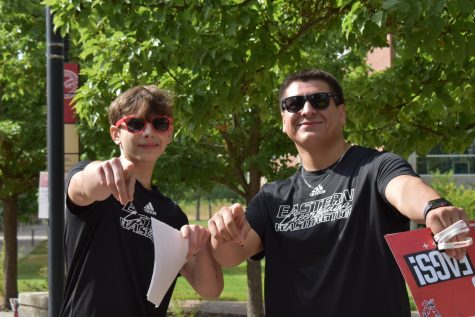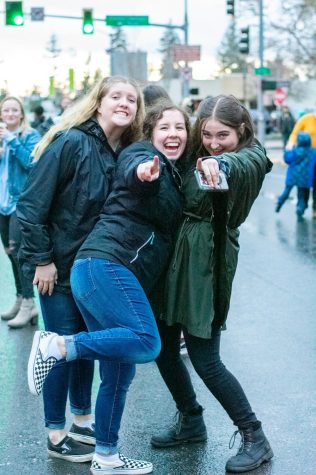EWU exhibition ‘Appropriate Ambitions’ utilizes artwork to challenge gender roles
March 12, 2016
Stepping inside is like walking back into the womb. Overhead, gracefully draped fabric hangs like a veil of silken clouds. Light filters downwards through the gauzy roof, painting the room a delicate shade of red. Two videos play in the background, thrumming low notes, sounding like a mixture of water and static. Artwork carved from cold steel lines the outer edges of the room.
An opening reception was held for an art exhibition in EWU’s Gallery of Art on March 2. The exhibition, “Appropriate Ambitions,” “is a collaborative installation combining the work of visual artists Garrett Bryant and Yaro Shon Neils,” according to a recent press release by the gallery.
The exhibition, open until April 14, is meant to provoke scrutiny of gender roles in our society. “I started reflecting on my identity — particularly [my] male identity and how it is constructed,” said Bryant. “[I thought] about the difference between masculinity in the south versus masculinity in the west and about masculinity in jock culture. [I thought] about those different iterations and how they change their shape, and [then] I started thinking about masculinity as a construct.”
Bryant said he then started thinking about masculinity in art history. “That was really kind of the impetus for this show,” said Bryant. “Just thinking about how masculinity in art history is widely celebrated whereas femininity is largely diminished to craft, in many ways. And so I wanted to make a comment on that, working in a satirical hyper-masculine way, and call attention to privilege of masculinity within the art world.”
Yaro Shon Neils, the other contributing artist in the show and a photography lecturer at EWU, said when she was presented the opportunity to display her work in the Gallery of Art, she thought to invite Bryant to participate because she felt like they were on the same track mentally.
“A lot of my work has to do with femininity and his work deals with masculinity and constructed identities and so it just worked really well together, specifically in relation to some of the ideas I’ve been thinking about, in terms of my past work as a social worker,” Neils said.
Neils and Bryant met in Missoula, Montana, while attending separate graduate programs at the University of Montana. This is the first time the duo has worked together on a project, though they have discussed it.
“This one’s a really different piece because it deals with the entire space of the gallery and I thought that was unique,” said EWU senior Chris Steele. “It’s interesting how they go from this soft, elegant thing to this hard metal male piece. The juxtaposition between the fabric and the pounded metal is kind of really pushed on you. One’s serene and the other is violent.”
The pieces themselves are a little hard to pin down. “It’s indescribable,” said EWU sophomore Aziz Jamal. “The first word that comes up is very aggressive, because of the metal and the scraping. And bloody, because of the red fabric.”
The steel sheets lining the outer edges of the exhibition are Bryant’s work. He created them with an axe — hacking through metal like a lumberjack striking at a tree. A small screen to the left plays a video of his process, a stream of relentless physical action that was edited together to complement the pieces themselves. “The video is largely kind of, like, the idea of myth-making and, like, personal mythology with masculinity and how men have this … infallible endurance. So I just wanted to cut it so I just never stopped,” Bryant said.
The shapes carved into the sheets were inspired by different topics of the exhibition’s overarching theme. They speak of male privilege and are labeled with satirical and sometimes crude titles that speak toward the denigration and objectification of women.
“I was offered extra credit for coming here,” said EWU sophomore Grace Barber. “But I wanted to see this. I think it’s really interesting. I’ve never heard of a sheet of steel being a medium, with an axe.”
The red, overhead fabric was Neils’ conception. “I think I measured everything like 20 times and had so many different drawings to try to figure it out,” said Neils. “Really there was a lot of planning. And a lot of sewing.”
The draping fabric — made from a type of gauze also used to bandage wounds — combined with the circular shape of the gallery, was meant to simulate the experience of being inside a womb, according to Neils. The fabric is also meant to represent trades — like sewing — that are largely thought to be a woman’s work. To the right of Bryant’s video plays a video composition of Neils endlessly sewing a pile of ruby red fabric; only her hands are shown.
Neils glanced around the room at the red-tinted light filtering down through the fabric. “Ultimately,” she said, “it’s interesting because the red doesn’t trump it … it changes the way that you experience these works. I mean, you’re seeing it literally through the red, so it brings everybody essentially together in this conversation. It’s not about men or women. It’s about everybody.”







